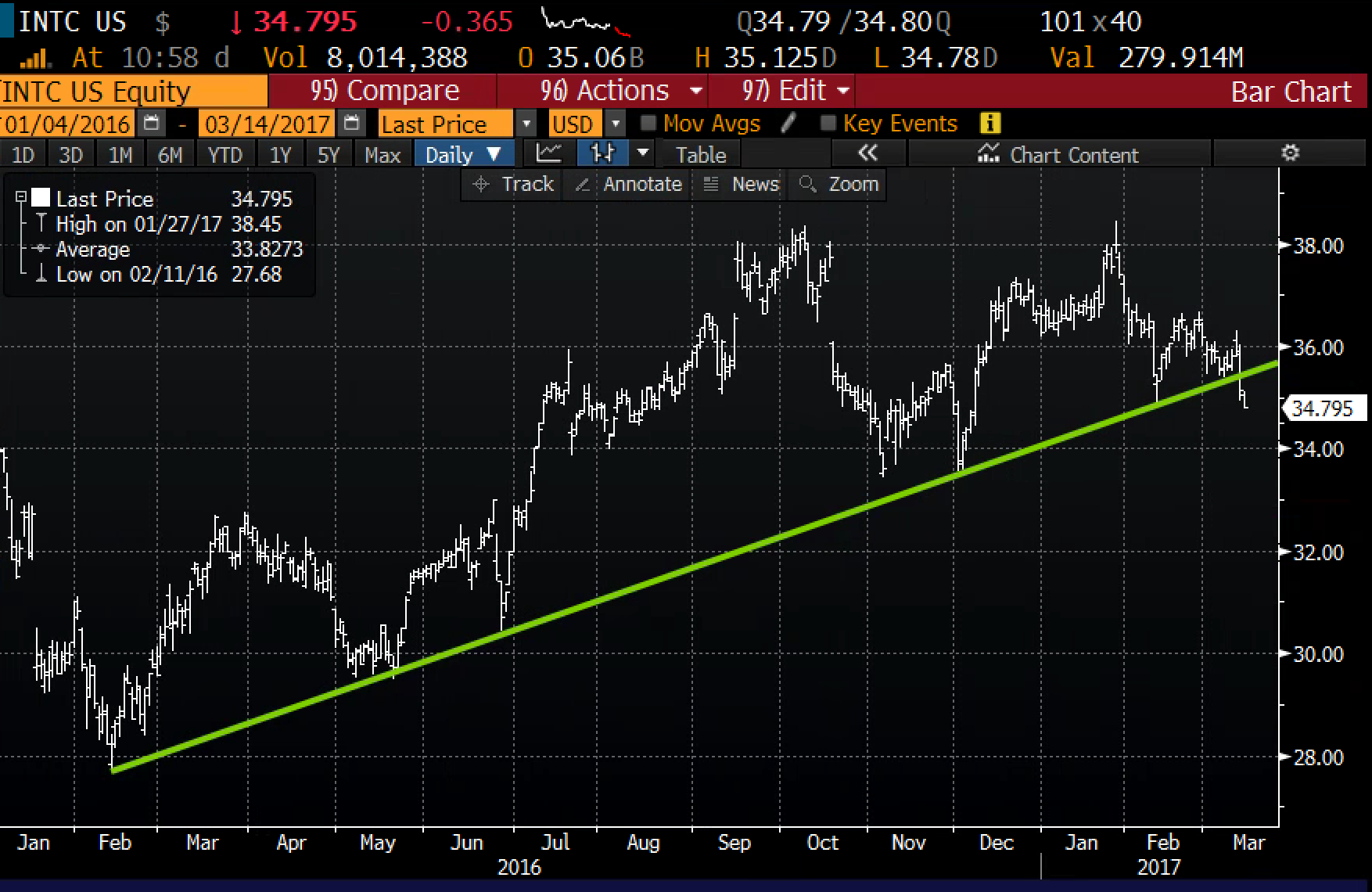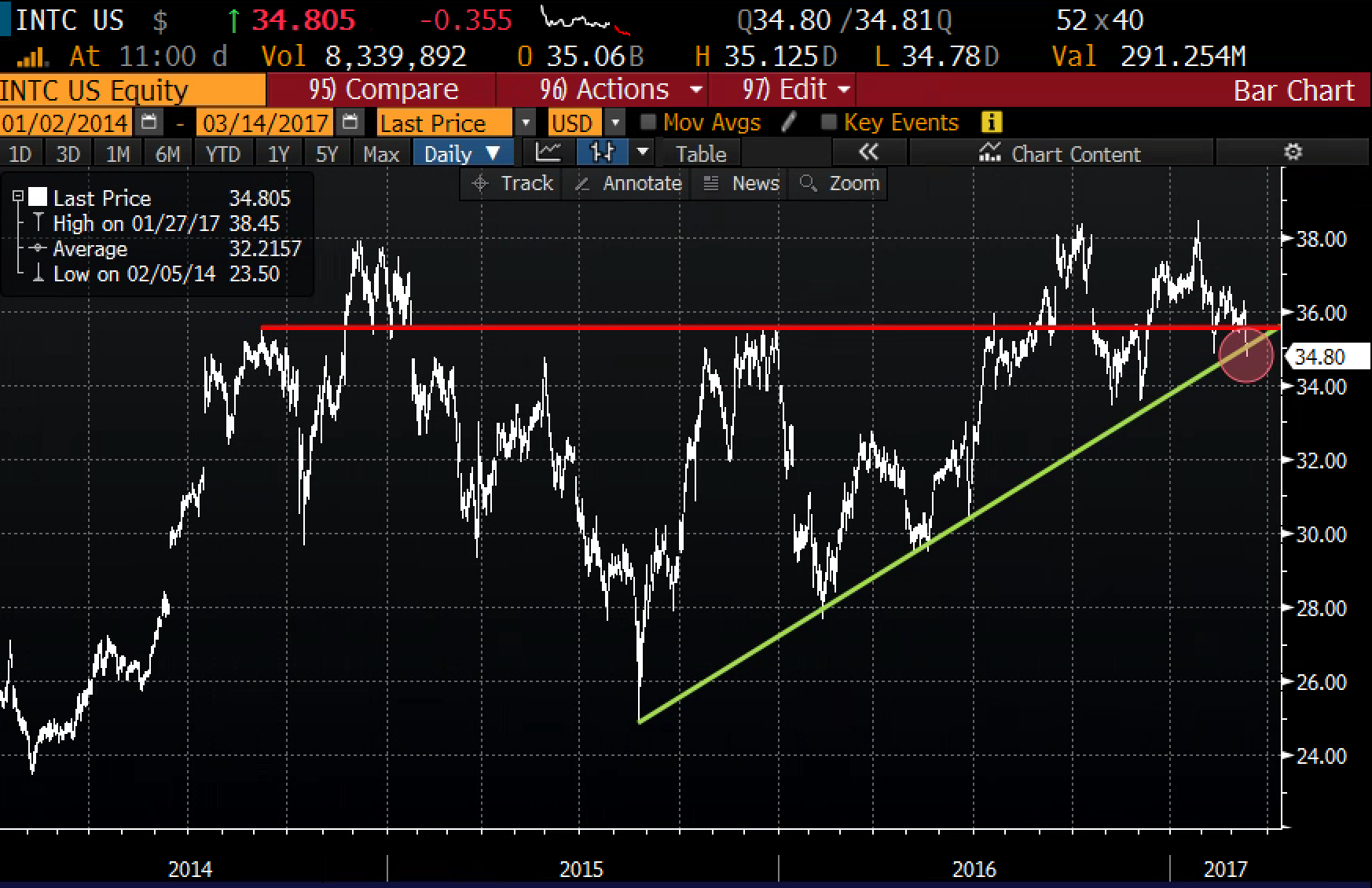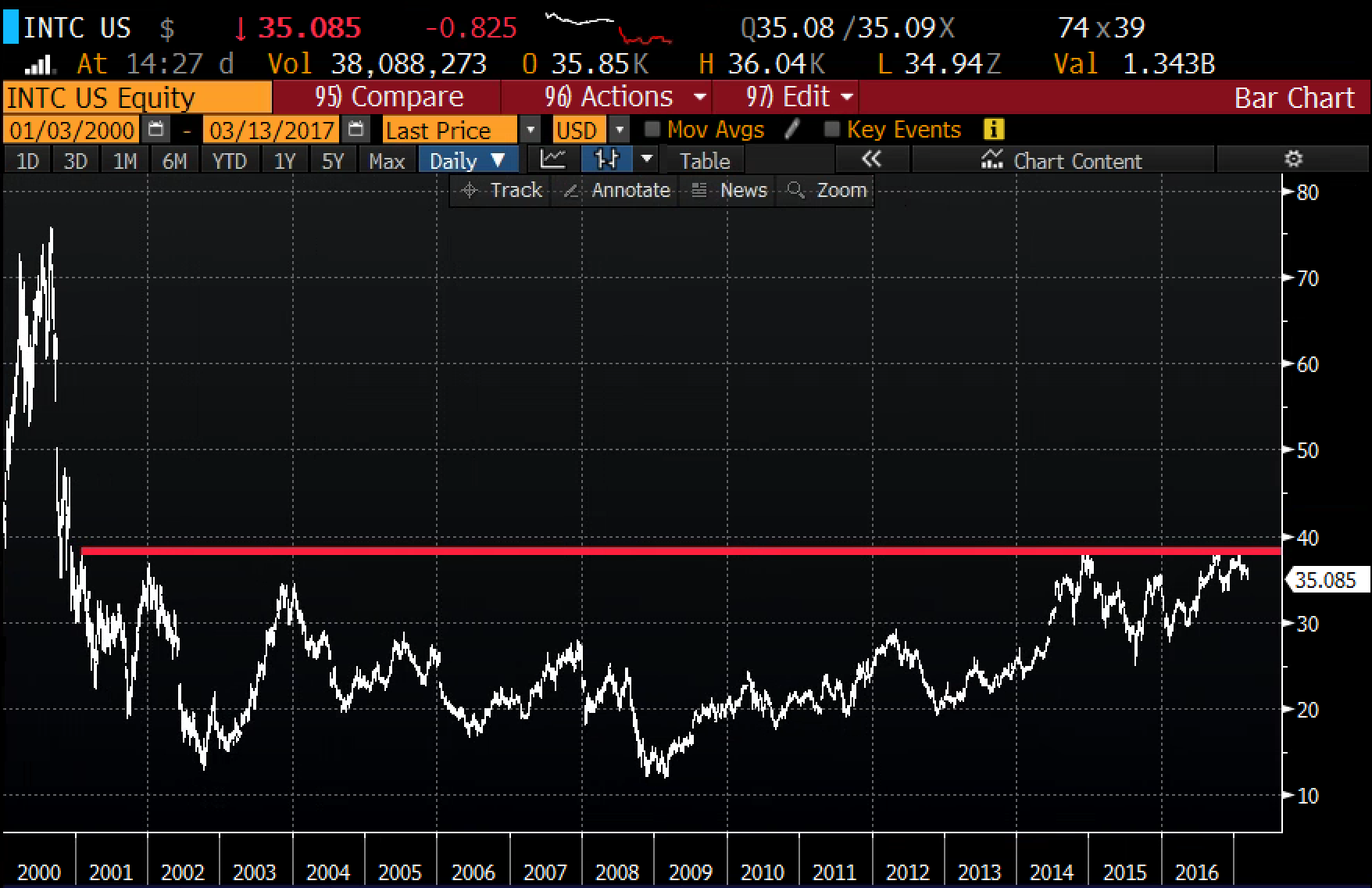Yesterday, we discussed Intel’s (INTC) nearly $15 billion bid for MobileEye (MBLY), the chip-based camera systems for autonomous cars. As we said, INTC was at the forefront of the personal computing and internet revolutions in the 1980s and 1990s, but for all intents and purposes missed the mobile boom of the 2000s. They seem hell-bent not to miss what comes next. Before the MBLY deal, INTC paid nearly $17 billion for Altera in 2015 to diversify away from the PC market and create a footing in emerging technologies broadly described as the Internet of things (IoT). Then last summer INTC paid $400 million for Artificial Intelligence chipmaker Nervana, at the time, Intel vice president Jason Waxman telling Recode:
the shift to artificial intelligence could dwarf the move to cloud computing. Machine learning, he said, is needed as we move from a world in which people control a couple of devices that connect to the Internet to one in which billions of devices are connecting and talking to one another.
There is far more data being given off by these machines than people can possibly sift through
Put those three deals together, equaling more than $32 billion in cash, about 20% of their current market cap and 50% of their expected sales this year, and you get the clear sense that this is not founder Gordon Moore’s Intel anymore. BUT current management is clearly well aware that applying Moore’s Law to the emerging technologies they are so aggressively investing in could yield returns at a sort of exponential rate. What investors in the near term will have to grapple with is just how much they are overpaying for MobilEye, and now much they might have overpaid for Altera. That said if Nervana’s technology were to be able to augment or be embedded with that of Altera and or MobileEye than it might end up justifying the purchase price of the others.
I have no idea how this shakes out, but investors fairly muted response to the MBLY price tag (INTC was down at its lowest point about 2.5%) suggests that there is a sort of glass half full towards the new Intel.
The stock trades less than 13x, which is representative of its expected growth of 1% and 3% on the top and bottom line respectively. The two large deals have and will put a fairly sizable dent in their balance sheet with their debt outstripping cash, which has caused diminished share buybacks since the Altera bid, while its dividend growth has been meh, despite the annual yield of almost 3%.
The stock is cheap, despite modest growth expectations, but that is no longer what the stock will trade on. As the MBLY deal closes, investors will focus on higher growth areas like AI, IoT and Autonomous driving, which should drive a re-rating in the stock’s multiple.
IN the meantime though it is worth noting that the stock yesterday broke the uptrend that has been in place from its 2016 lows, with the next level of technical support between $34 – $32:

Taking a view since the August 2015 flash crash, the stock is now below the uptrend since, and sitting on important support at $35:

All that said, if the acquisitions come together as management hopes and the company ends up being at the forefront of the AI/Autonomous Driving/ IoT platform emergence, then there is room as far as the eye can see to the upside, especially when you consider how cheap the stock is currently:

So What’s the Trade?
After shareholders get used to this latest acquisition, INTC stock could set up a nice second half of the year story. Of course, there’s risk of the market correcting in 2017 and with that you’d imagine traders would not be too kind to stocks that used up a ton of the cash on a buying spree near the highs. Therefore selling near term to own farther out calls makes sense, defining risk while allowing for inexpensive upside for the second half of 2017:
INTC (34.75) Buy the April/Oct 36 call calendar for 1.25
- Sell 1 April 36 call at .27
- Buy 1 Oct 36 call for 1.52
Breakevens on April expiration – Greatest gains if the stock closes near 36 on April expiration, losses if the stock is lower or significantly higher. Maximum loss is 1.25 but with the long call expiring in October most mark to market losses from the stock moving too far from the 36 strike before April expiration would be small.
Rationale – If the stock closes somehwere near 36 on Arpil expiration the short April 36 calls can be closed and rolled to continue to lessen the premium risk in October, eventually leaving a cheap upside defined risk positioning looking out towards the second half of 2017.